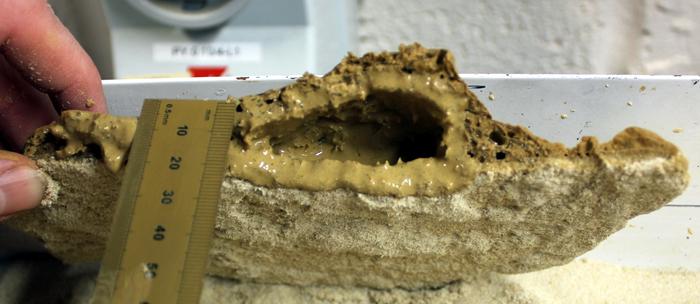
Credit: © Bro et al./Nature Geoscience
The surface of the planet Mars bears probable traces of ‘sedimentary volcanism’, a geological phenomenon that leads to the eruption of mud from underground. But how does a mixture of sediment and water behave in the open air on the Red Planet? Conditions there are extremely different from those on Earth – atmospheric pressure is 150 times lower and temperatures are generally negative. An international research team including Susan Conway, a CNRS researcher at the Laboratory of Planetology and Geodynamics (CNRS/Université de Nantes/Université Angers) recreated martian conditions in a low-pressure chamber to observe the flow of mud. These experiments showed that the mud can behave in the same way as certain lava flows on Earth that are called pahoehoe and are characterised by numerous lobes. On Mars, the outer surface of the mud would freeze on contact with the air, while the inner core remains liquid. This liquid can break the frozen crust to form a new flow lobe that refreezes (see video: https:/
###
Media Contact
Francois Maginiot
[email protected]
Related Journal Article
http://dx.




